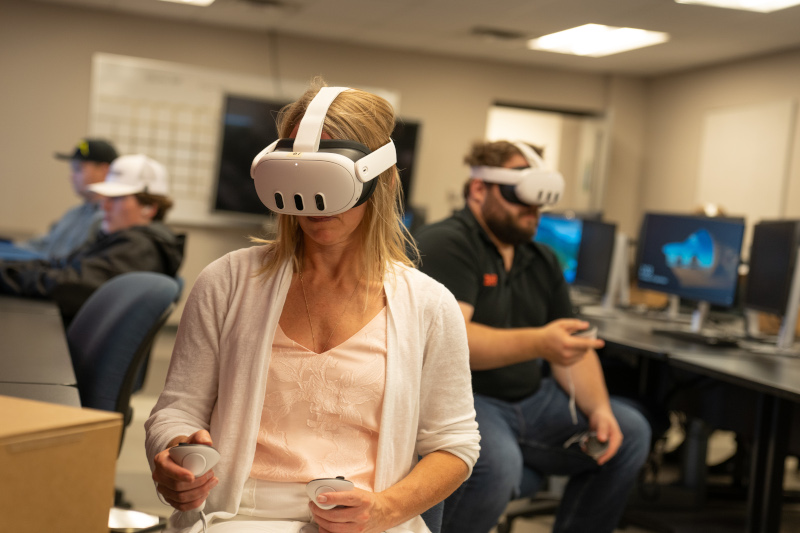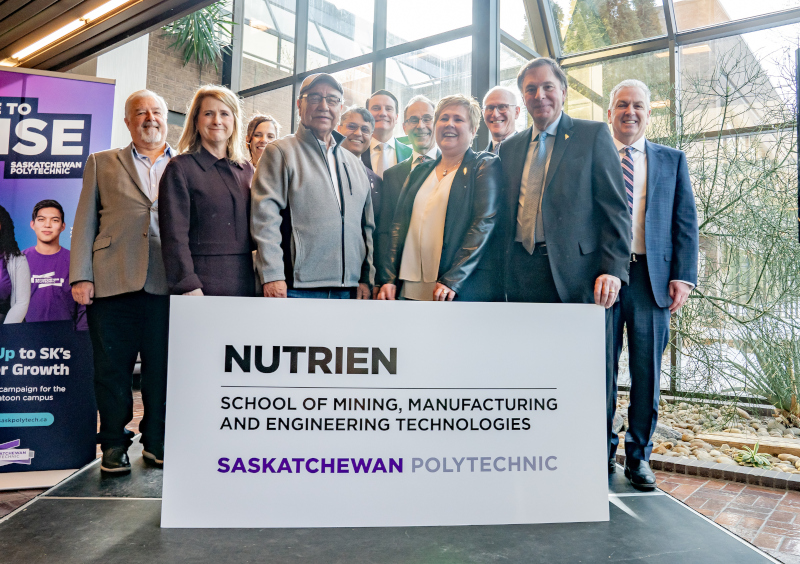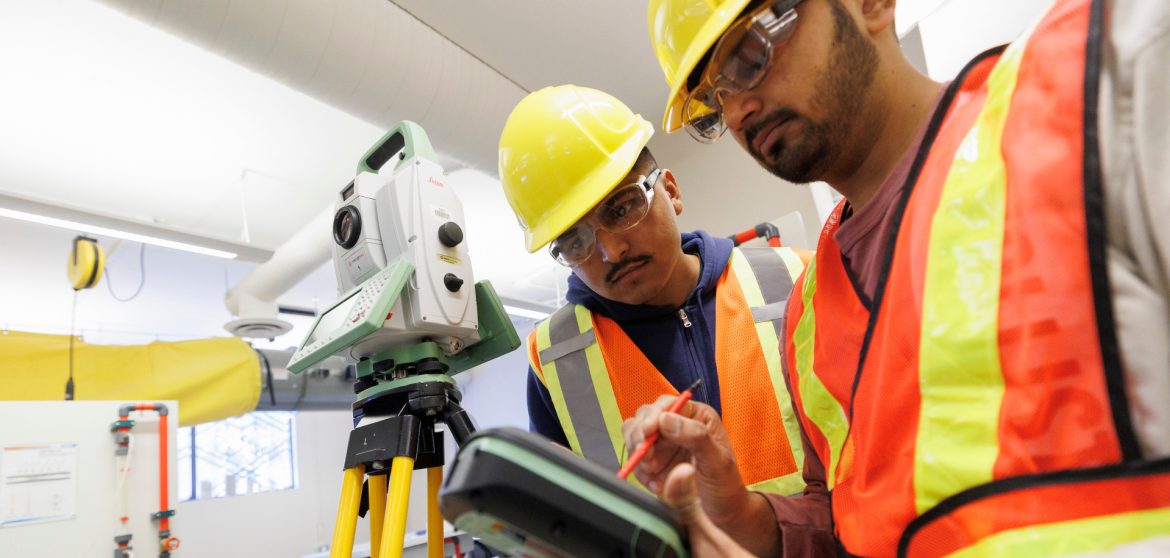Saskatchewan Polytechnic
Training tomorrow’s provincial workforce
Providing cutting-edge innovation for industry
Providing a first in class education, Saskatchewan Polytechnic represents a significant driver of economic growth in the province. With one in 19 jobs in Saskatchewan supported by activities of Sask Polytech, its students and alumni, this leading post-secondary institution adds $2.6 billion annually to the provincial economy. In addition, Sask Polytech routinely conducts innovative, applied research for industry and community partners.
With four campuses located across Saskatchewan, Sask Polytech offers over 150 programs with high graduate employment rates. It currently has a 96% overall graduate employment rate and 91% of employers say they would hire a Sask Polytech grad again. Sask Polytech is a member of Polytechnics Canada, an alliance of research-intensive, internationally recognized post-secondary institutions committed to creating high-quality jobs for the future.

Technology and skilled trades
Brenda Suru is the Dean for the Faculty of Technology and Skilled Trades, one of the four faculties at Sask Polytech. This faculty encompasses four schools and almost 60 programs, which include most of the engineering, technology and trades training at Sask Polytech. This future-forward programming is as diverse as the sectors it connects to—from agriculture and mining to technology, natural resources and renewable energy. Most of these programs include work-integrated learning and applied research opportunities.
By fostering strong industry connections, Sask Polytech curriculum is relevant to today’s labor market. Suru explains that most of her programs have a Program Advisory Committee (PAC) made up of eight to 14 members from both the public and private sectors. “PACs are made up of industry representatives, government officials, as well as some of our accrediting bodies,” she explains. “Sask Polytech is closely aligned with industry needs and changes. We rely on the PAC’s guidance for our curriculum and involve them extensively in our processes. For example, most of the major Saskatchewan mining companies are represented on our PACs.” Suru notes that trade programs are advised by trade boards, the equivalent of a PAC, to ensure these programs are aligned with the needs of skilled trades training in the province.
Many programs also offer paid cooperative education work terms. “That’s another way we have a connection with industry,” Suru adds. “Our students are in high demand. And when they come back from working on the job, they have so much more to share in the classroom than they would with two years of only theoretical training.”
The relationship with Saskatchewan industry runs deep in other ways, as well. This past spring, Sask Polytech received its largest ever corporate donation in the form of a $15M gift from Nutrien, the world’s largest producer of potash, its second largest producer of fertilizer, and whose current employee count includes nearly 300 Sask Polytech graduates. The funds will go to construct the new Joseph A. Remai Saskatoon Campus, which is designed to be a 21st century learning environment to help supply the next trained workforce for current and emerging industries. It is also hoped that the new campus will set the stage for an Innovation Corridor that brings together businesses, entrepreneurs, students, and other learning institutions to create a centre of excellence in applied learning and research.
Another partner of Sask Polytech is Prairie Clean Energy, a local company founded in 2020 to develop environmentally sustainable solutions for agricultural waste. Today, it has evolved into a comprehensive aggregation and processing business, producing pellets from previously unused flax straw for energy customers worldwide, while also offering a new income source for Canadian farmers.
“Prairie Clean Energy received a $1.1M grant from MICA (Mining Innovation Commercialization Accelerator) for research into how to use locally produced agricultural waste in the form of flax straw to generate low carbon bioheat to reduce greenhouse emissions in the mining sector,” Suru recounts. “We’re going to set up a demonstration site with them in Moose Jaw that will include a biomass boiler system that will heat an equipment storage and teaching space for the Agriculture and Food Production program. Research will be done to learn how biomass boilers can be used to heat buildings in the mining industry.”
Another project, with funding from the International Minerals Innovation Institute (IMII), was the creation of a virtual mine lab for the Mining Engineering Technology program. The $102,000 grant helped Sask Polytech develop the software for virtual reality (VR) headsets. “Due to the remote locations of many Saskatchewan mines, it’s not easy for our students to be onsite to do practical work,” Suru explains. “These VR headsets will virtually take them underground.” VR headsets create immersive simulations to explore mining environments without physical risk, while fostering a deep understanding of safety protocols, emergency procedures and many of the skills needed on an actual jobsite.

Innovation in mining
Chamirai Charles Nyabeze is the Vice President of Business Development for the Center of Excellence in Mining Innovation (CEMI) and the Director of MICA. “CEMI has been in operation for over a decade and is headquartered in Ontario,” he shares. “Its vision is to solve the mining industry’s challenges by making the future happen sooner. So, we’re about innovation and advancing the three Ps – profit, people, and planet. Mining is a business and if it’s not profitable it shuts down; we care about people and want to make sure that mining is respectful of the human being; and we want to make sure that mining impacts the planet in a positive way.”
“We do innovation scouting to find new technologies across the world and we do challenge identification,” Nyabeze continues. “Then we match solutions and challenges. The fourth thing we do is commercialization services. That’s actually what MICA is – a network that was created to accelerate the speed at which innovation gets adopted by the mining industry. We have a grant of $40 million from the Government of Canada and we have six main partners across the country, one of which is Sask Polytech. The reason for these six main partners is that we actually knit together the Canadian innovation system, because it’s currently not connected for mining as we would like it to be. So, we’re connecting all the capabilities coming out of the innovation ecosystem from across Canada so that it can direct and influence mining.
“We don’t do projects ourselves, but we make projects happen. In our program, we have four technical themes: Productivity, Environment, Energy, and Digital Technology. Our mission is to advance technology that is either pre-commercial or demonstration-ready. And we like to advance technologies that have some momentum. On those four technical themes, we have funded 50 projects from across the country that really have commercialization potential. We look at mining across the different mineral/metal types – coal, uranium, potash, gas – and across the whole value chain and supply chain. And we’ve been able to leverage the $40 million that we got from the government to $160 million through provincial and private/public partnerships. Our collaboration with Sask Polytech is allowing us to find technologies that are hidden in Saskatchewan, and I want to share them with the rest of the country.”
All things digital
Terry Peckham is Director for Sask Polytech’s Digital Integration Centre of Excellence (DICE), Saskatchewan’s first Technology Access Centre (TAC) funded by NSERC and Innovation Saskatchewan. DICE performs applied research in a diversity of sectors, including mining. “I focus on the digital aspects,” he says, “anything with Artificial Intelligence (AI), machine learning and digital systems.” One of DICE’s applied research partners is Cameco, one of the world’s largest publicly traded uranium companies, with headquarters in Saskatoon. Utilities around the world rely on Cameco to provide global nuclear fuel solutions for the generation of safe, reliable, carbon-free nuclear power.
“For Cameco, we developed some AI systems that they have put into production that involve modifying the commands given to their jet boring mining machines to more accurately drill out a cavity so that they’re able to mine more uranium,” Peckham reports. “It has sped up the amount of time it takes them to do the planning, where they’re going to dig, and how they’re going to dig next. And we’ve been able to decrease the waste coming out the other end as well. This AI project has turned out to be a really good investment for Cameco.”
Other projects from Peckham’s area include work on hyperspectral imaging, which enhances the identification of objects and materials by analyzing their unique spectral signatures; robotics, which allows for the exploration of dangerous mine areas without the need for onsite humans; and an underground positioning project to more accurately position both mining machines and personnel. “We’ve also done some work on recapturing low-grade heat and converting that to electricity,” he adds. “How do you capture some of that energy and put it back into the system instead of just exhausting it?”
Then there is quantum sensing, an advanced technology that improves the accuracy of how to measure, navigate, study, explore, see, and interact with the world by sensing changes in motion, and electric and magnetic fields. “There are one or two other places in the world that attach quantum sensors to robots,” Peckham states. “Hopefully, we’re about to become one of them. They have huge capabilities for detecting and doing things underground that nobody else brings to the table. And at DICE we’re applying it in ways that they don’t normally apply, because that’s what we’re good at doing. So, it’s an interesting mix between cutting-edge technology and how to apply it in the real world.”
Sask Polytech’s challenge
Going forward, Suru says that Sask Polytech’s challenge is to continue to provide the province’s industries with skilled workers who understand and are familiar with new and emerging technologies. “That’s an area we’re working on,” she states. “We’re also looking toward nuclear energy. What does the nuclear industry need? Also, how are we going to use AI, not just in training, but in research and in providing opportunities to industries to think differently, do differently, and maybe be more effective in energy management? It’s an incredible time to be in post-secondary education, we have huge opportunities on the horizon.”
AT A GLANCE
Saskatchewan Polytechnic
WHAT: A 21st century, post-secondary education and training institute
WHERE: Saskatchewan, Canada
WEBSITE: www.saskpolytech.ca
PREFERRED VENDORS
MICA (Mining Innovation Commercialization Accelerator) – www.micanetwork.ca
The MICA Network is a Canadian initiative focused on bridging the gap between innovation and market-ready solutions in the mining industry. MICA supports the commercialization of new technologies and drives industry advancement by growing memberships, creating strategic partnerships, and forming national and global alliances with stakeholders to promote sustainable growth.



